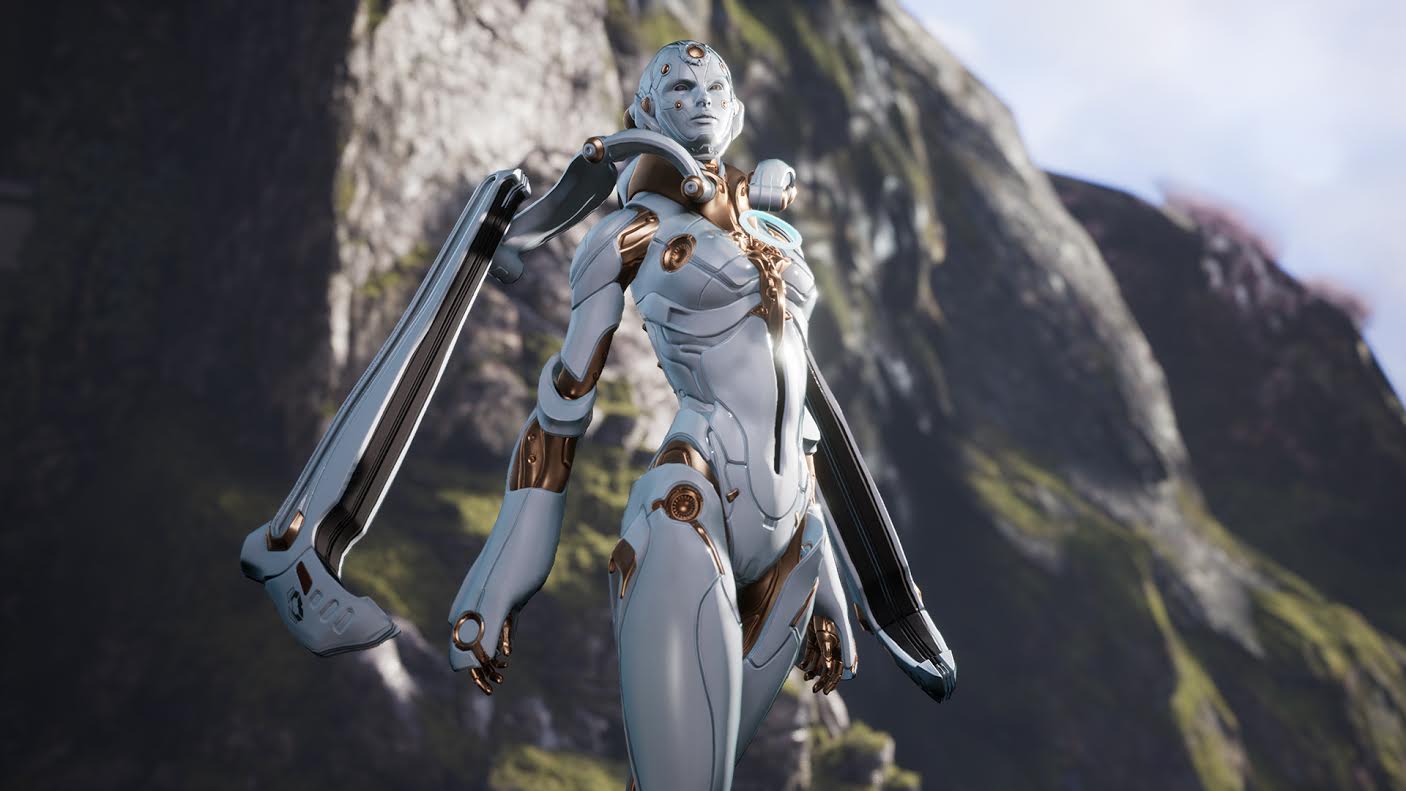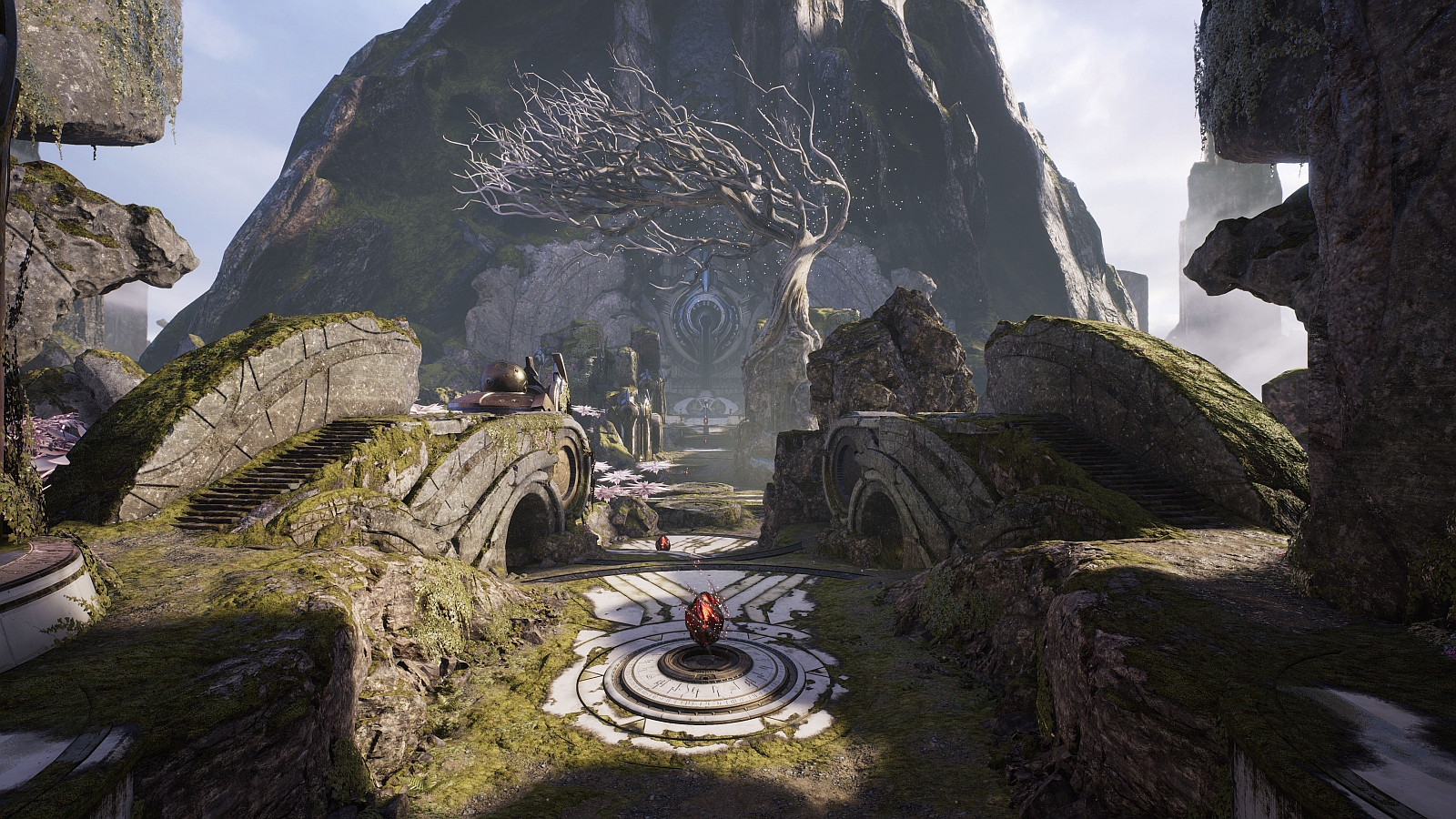What you need to know before playing Paragon

Epic's third person lane-pusher Paragon enters early access tomorrow, although servers are already live for alpha testers and select invitees. I really like the game so far: it looks great, the fully three-dimensional map shakes up the genre in a meaningful way, and there's enough DotA in its DNA to make me feel at home.
It's also very much unfinished. This isn't one of those marketing betas that amounts to a demo of a game that has gone gold: they are rolling Paragon out to the public remarkably early in its life, with only 13 heroes and plenty of placeholder art, animations, and interfaces. It's rough around the edges, there are balance concerns, and there's not much of a new player experience to speak of. This needn't put you off: there's an opportunity here to get on the ground floor with a new competitive game. Even so, it's worth prefacing anything about Paragon with that disclaimer.
Anticipating that a lot of new players are going to take the plunge tomorrow, I've put together a list of things that I wish I'd known before I started playing. These tips assume familiarity with other games of this kind. I assume you know what minions and towers are, what pushing means, what a teamfight is, and why it is bad to die. If you don't, Epic made a pretty good tutorial video for Paragon that doubles as an introduction to the genre:
Up to speed? Good. Let's get into it.
You must gather the orange balls
When you kill a player or minion in Paragon, you get experience—that much is business as usual. Slain foes also leave behind a pile of orange balls, however: this is Amber, and it is important. Gathering up Amber earns you CXP (card experience) that is spent to buy new cards from the shop. Think of it like gold that you have to manually collect. This adds a risk-reward to farming, particularly for vulnerable ranged heroes like Sparrow.
If you can get the last hit on a minion, all of its precious Amber will fly directly to you—allowing you to stay out of harm's way. If you don't get the last hit, you'll have to collect it manually. You'll need to account for this in your positioning while farming, but bear in mind that it's never worth dying for that one orange ball that got away.
Harvesters and Harvester Keys are a thing
If you've played this type of game before you know what jungle creeps and minions are, but harvesters are something new. These are essentially capture points, located around the map, that gather Amber for the team that owns them over time. You can gather stored Amber by standing near the harvester, and if you've bought a Harvester Key then collection is faster. Harvesters are represented on the minimap as a 'keyhole' shape—a circle with a smaller circle growing out of it.
Keep up to date with the most important stories and the best deals, as picked by the PC Gamer team.
If a harvester fills up, it'll start dropping excess Amber on the ground where either team can get it. If you come across an enemy-held harvester, you can attack it to reset it to neutral and take it for your team. There seem to be a bunch of ways to incorporate a harvester into your playstyle. You can use it to top up on CXP on the way back to base, or you can roam aggressively to remove enemy harvesters as part of your jungling strategy.

Cards look complicated but aren't really
Cards are essentially items. There's a fantastic guide to that effect on the alpha forums by Serecrul—find it here. I'd recommend reading that guide in its entirely once you've got a handle on Paragon's basic systems.
The fundamental thing you need to know, however, is that there are three types of card: active, passive, and upgrade. Actives are things like health potions, energy (mana) potions, and wards. I'll get to them in a minute. Passives boost your stats, and each passive has three upgrade slots. Upgrades go in those slots, tweaking the bonuses that the item provides. When a passive is full of upgrades, it gains an additional buff.
It costs 12 card points to max out the majority of passives: 3 for the passive itself, plus 3 for each upgrade. Your starter decks will give you approximately what you need for each character: read the state of the game (and the descriptions on each card) to determine the most appropriate upgrade path for your situation. That might mean buffing health, cooldown reduction, attack damage, or lifesteal. There's more to say in that regard than this guide can cover, but if you've ever itemised in a MOBA you know how this works. Use your judgement.
Buy your actives
Health potions and energy potions each cost one card point and have three charges that are replenished when you return to the fountain. They're basically essential. They sustain you in lane and allow you to use your abilities more often. Buy them both at the start and hold onto them until the lategame, when you'll want to use the slots they occupy for something else.
Wards work the same way, but are a little trickier to use in Paragon than in other games. Line of sight is a lot more complicated thanks to the verticality of the map, and wards themselves aren't invisible. They're easily destroyed, so treat them more as an early warning system to spot rotations than a way to gain lasting vision over an area of the map as you might in Dota 2.

Be careful with the card shop interface
The card shop interface and associated deck builder are two of the areas where the game still feels extremely unfinished. It's fiddly to use and its easy to make mistakes. Be particularly careful when buying a new card that you don't accidentally overwrite one of the slots you've already filled. I've done this. Don't do this. It sucks.
Paragon is a game about timing
Really, all MOBAs are about timing. Kill leads and experience advantages are great, but what matters is when you get them and when you choose to deploy them. Your explicit reward for a kill or last hit is XP and orange balls, but the resource counter you really need to pay attention to is the clock at the top of the screen. Timing is everything.
This is particularly important given how slow Paragon is. It's not an action game. Characters move slowly, teleporting back to base takes time, moving across the map takes time, charging up into sprint mode takes time. I would argue that moving around the map efficiently is the single biggest factor in determining which team wins or loses. You need to invest every second carefully, which means ensuring that you're always achieving something: pushing, farming a jungle camp, gathering from a harvester, harassing, and so on. If you're dancing around aimlessly in the early game, you're probably losing.
In my experience games of Paragon either last about 20-25 minutes or they last an hour, and this is determined by how efficient each team is. In the former case, an early lead can snowball dramatically. In the latter, matching each other for efficiency generally means that a game will come down to a late teamfight. In that event, it'll be the team that is most ready to fight that wins: that means having everybody in position, healed and ready to go. If you are late to the fight that decides the game, you might have just lost a hour-long match for your team: so pay attention to your timings and the minimap, and don't be late.

The terrain favours defenders
Paragon's ledges and flanking routes generally favour defending teams. It's easier to initiate from above, to encircle attackers, to poke, and to fall back. This becomes more and more the case the deeper you get into enemy territory, and it needs to be respected: if you're snowballing, consider that the job of the defender is getting easier as you progress. Sometimes, you'll be so far ahead that it won't matter. If the game is in any way close, however, taking an outer tower doesn't mean you can easily roll into the next one. You might be better off working on the enemy's outer defenses in other lanes.
Super minions are a real threat—and the key to ending a tough game
Inhibitors respawn in Paragon as they do in League of Legends, but the super minions that the enemy gains for destroying one are no joke. They're incredibly tough and they'll end the game single-handed if left unchecked. If you lose an inhibitor, you need to dedicate either one hero with great wave-clear or two characters to keeping the lane pushed out. You can't ignore it. This means that if you've lost an inhibitor, you can't reliably roll out for a 5-on-5 teamfight. Your best option in the majority of cases is to push the afflicted lane as a group and hope to take an advantageous fight on the way.
If you lose two inhibitors, you are in trouble.
You should bear this and the defender's advantage in mind while trying to end the game. If you crack one inhibitor, it's tempting to keep pushing and go for the core. If you can win the next teamfight, great—you've probably just won the game. But remember that you're now fighting the defenders where they're strongest, and because you're pushing with only a single lane of super minions they've no reason to do anything other than fight you head-on. If you lose that fight, and you have a decent chance of losing it, then you've give them all the time in the world (remember timing?) to push that lane back out and regain some control of the map.

If you take one inhibitor you are better off trying to down a second or even third inhibitor before you try to end the game. I've seen lots of players get impatient at this point, but the goal should be to create a scenario where the defenders can't all be in the same place. Splitting them up by forcing them to deal with multiple lanes of super minions nullifies their natural strategic advantage, and gives you time (remember timing?) to heal, invest card points, and return as a group to fight them while they're weak.
Don't give up
The strategic drama of late-game Paragon is one of my favourite things about it so far, and as I've hopefully illustrated above it’s very possible for defenders to turn things around or for a team with a lead to get cocky and throw it away. This is one of many reasons why you shouldn't reach for the surrender button when a match goes south: if you're seriously losing, it'll likely all be over soon enough anyway. If you've got a chance at turning the game around, it's worth fighting on. By forcing a surrender vote all you're doing is broadcasting to your team that you, specifically, have tilted.
Put it this way: if you lose, you were right all along (you pessimist). If you turn the game and win, you'll remember that match more fondly than any number of one-sided stomps. If you surrender, you get neither of these things.

PC Gamer Pro is dedicated to esports and competitive gaming. Check back every day for exciting, fun and informative articles about League of Legends, Dota 2, Hearthstone, CS:GO and more. GL HF!
Joining in 2011, Chris made his start with PC Gamer turning beautiful trees into magazines, first as a writer and later as deputy editor. Once PCG's reluctant MMO champion , his discovery of Dota 2 in 2012 led him to much darker, stranger places. In 2015, Chris became the editor of PC Gamer Pro, overseeing our online coverage of competitive gaming and esports. He left in 2017, and can be now found making games and recording the Crate & Crowbar podcast.


